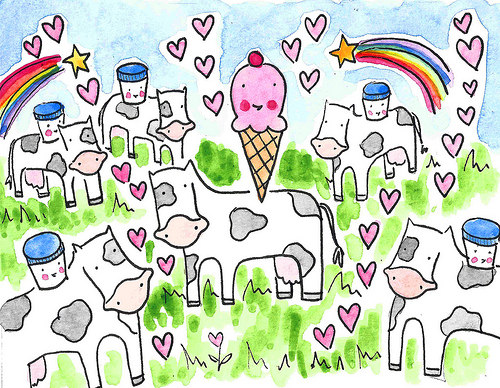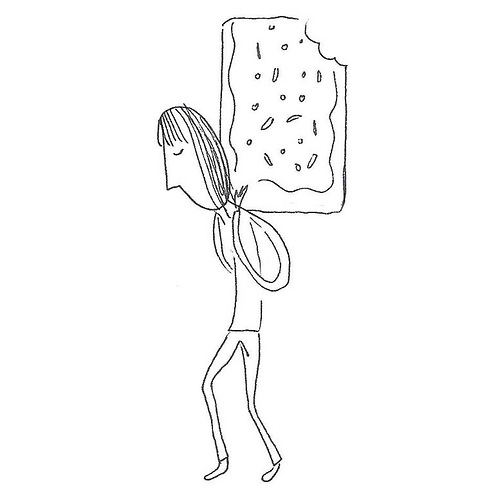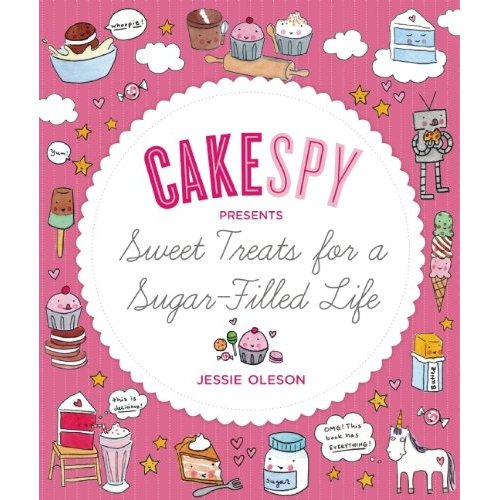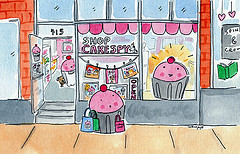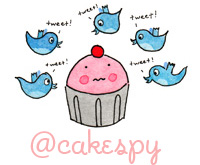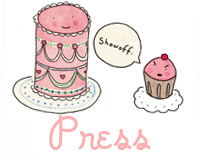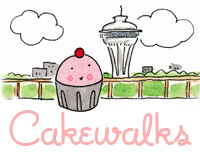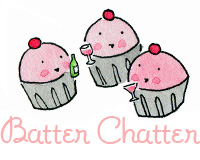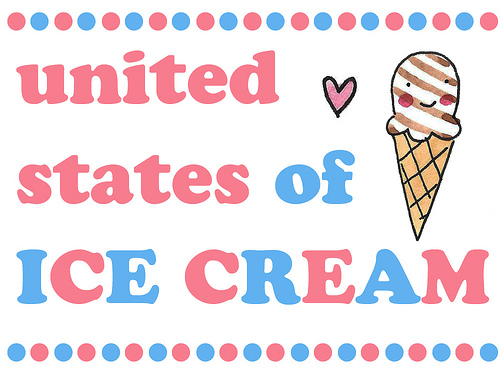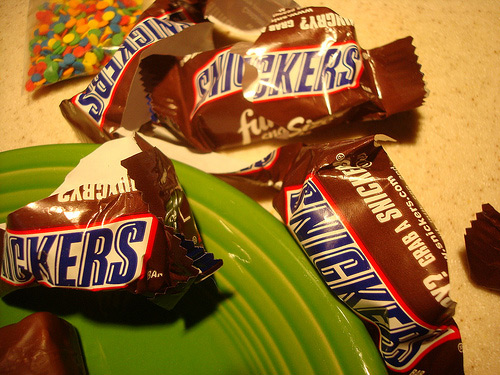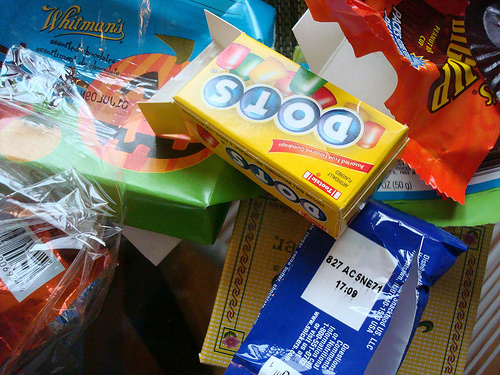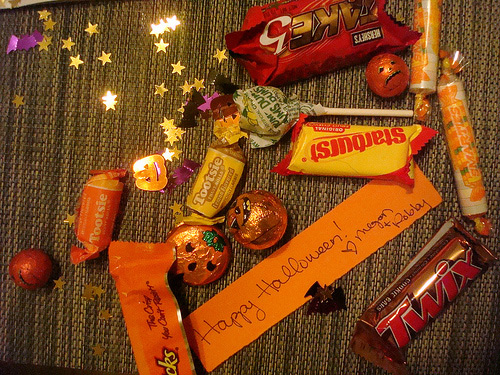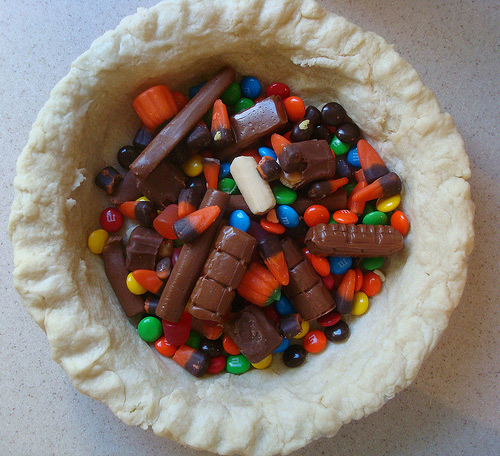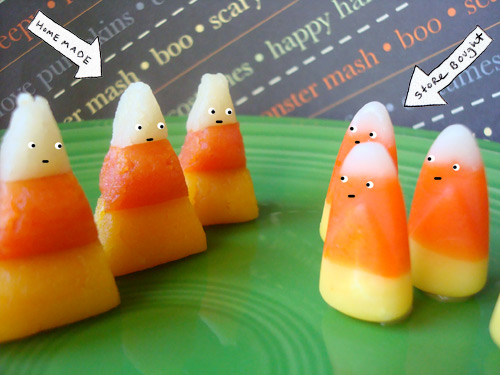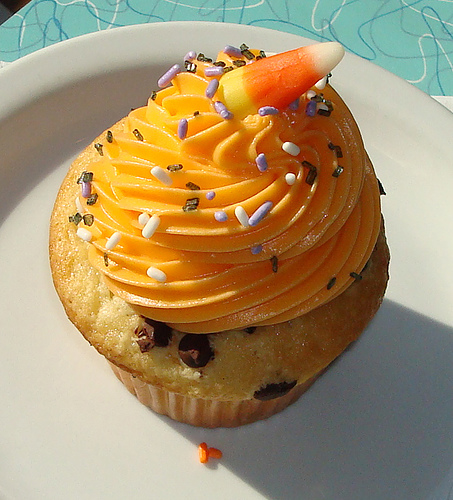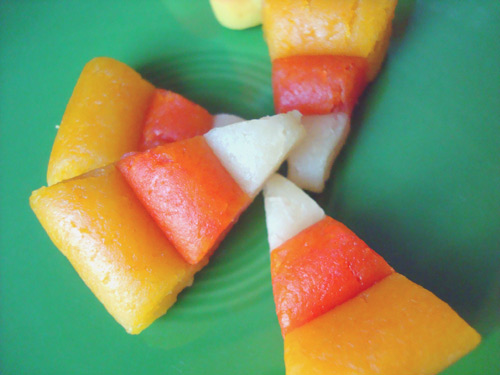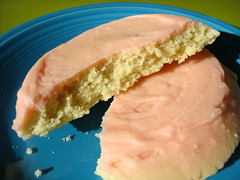Foodbuzz 24x24: Nanaimo Bar Extravaganza
 Sunday, March 27, 2011
Sunday, March 27, 2011  It is with a heavy heart full of sadness that I realize that many of you have never even heard of--much less tasted--the wonderful thing that is the Nanaimo Bar.
It is with a heavy heart full of sadness that I realize that many of you have never even heard of--much less tasted--the wonderful thing that is the Nanaimo Bar.
But it is with the lightness and joy of 99 luftballoons floating in the summer sky that I realize that I am going to show you the light, in the most delicious way possible.
That's right. It's time for an absolute education and delicious extravaganza featuring the Nanaimo Bar. This post is my entry for the Foodbuzz 24x24 project, and it's broken down into three parts: History (wherein you will get educated on the ways of the Nanaimo), Recipes (I made 7 different versions!), and Testimonials (loving thoughts and odes from eager eaters).
 You say Nanaimo...
You say Nanaimo... The bottom layer is a sturdy, tightly packed layer of chocolate, graham cracker and coconut, bound together with melted butter.
The bottom layer is a sturdy, tightly packed layer of chocolate, graham cracker and coconut, bound together with melted butter.The middle layer is a buttery, frosting-y, creamy, custard-y stuff that is so much the opposite of low-fat that it makes you want to weep with pleasure.
The top layer is a solid chocolatey layer, which is firm but not hard.
As you may have come to suspect, each layer is tasty enough to stand on its own--but when combined, you’ve basically got a triple threat of intensely rich, decadently condensed deliciousness.
That is to say--super yum.
But where did this bar come from? There’s a popular story about how the bars were the winner in a baking contest, invented by a housewife who named them Nanaimo Bars in a burst of civic pride. While said housewife does figure into the equation (see below), it’s definitely not the whole story.
There are several purported predecessors of the bar going by “New York Slice”, “Chocolate Slice”, “Refrigerator Cake”, “Miracle Bars”, “Ribbon Bars”, “Smog Bars” (or “London Smog Bars”).
It’s those Smog Bars, though, that seem to be the closest relative to the Nanaimo Bar, as evidenced by an interview with Jan Pare, who wrote Company's Coming: 150 Delicious Squares, who spent her formative years (1927-47) in Alberta, Canada:
"Nanaimo Bars were originally called Smog bars, and everybody made them: graham-cracker crust, cocoa, Bird's Custard in the filling. My Grandma Locke made smog bars, so did my mother."
 Proof is in the pudding--or rather, custard: Bird’s Custard, a popular custard powder invented in the UK and a key ingredient in Nanaimo bars, easily could have immigrated to the area in the early 1900s when there was a large wave of new immigration from Europe; this would have been well-timed with the advent of iceboxes as a common household item in Canada, which would explain for the bar’s UK influence but Canadian birth.
Proof is in the pudding--or rather, custard: Bird’s Custard, a popular custard powder invented in the UK and a key ingredient in Nanaimo bars, easily could have immigrated to the area in the early 1900s when there was a large wave of new immigration from Europe; this would have been well-timed with the advent of iceboxes as a common household item in Canada, which would explain for the bar’s UK influence but Canadian birth.In fact, the first published instance of the phrase Nanaimo Bars dates back to 1953, in the Vancouver Sun, but the recipe itself is for London Smog Bars, with a footnote that “These are also known as Nanaimo Bars”.
It doesn’t seem too far-fetched then, to conjecture that this confection, like those European settlers, migrated westward; a recipe that resembles the Nanaimo bar in basically all but name, entitled “Chocolate Slices”, was submitted by a Mrs. E. MacDougall in 1952 Women’s Auxiliary Cookbook.
But regardless of how they got there, one thing is for certain: even if they weren’t invented in Nanaimo, it is where the treat took root. And it’s here that the humble housewife mentioned earlier shows her important role: Mrs. Mabel Jenkins of Cowichan Bay submitted her recipe for the bars to the annual Ladysmith and Cowichan Women's Institute Cookbook, which was sold in the early 1950s in the region as a fundraiser. It was a popular favorite in the book, and because the bars are ridiculously delicious and keep well, the recipe gained popularity in the province's households and working-class towns, and was sold in many of the coffee shops on Nanaimo’s Commercial Street.
In more recent years, the bars have been called “Canada’s Favourite Confection”, and all I can say is, Butter Tarts never stood a chance.
 Recipe 1: OFFICIAL NANAIMO BAR RECIPE
Recipe 1: OFFICIAL NANAIMO BAR RECIPEBottom Layer
- ½ cup unsalted butter (European style cultured)
- ¼ cup sugar
- 5 tbsp. cocoa
- 1 egg beaten
- 1 ¼ cups graham wafer crumbs
- ½ c. finely chopped almonds
- 1 cup coconut
Melt first 3 ingredients in top of double boiler. Add egg and stir to cook and thicken. Remove from heat. Stir in crumbs, coconut, and nuts. Press firmly into an ungreased 8" x 8" pan.
- ½ cup unsalted butter
- 2 Tbsp. and 2 Tsp. cream
- 2 Tbsp. vanilla custard powder (Cake Gumshoe Kate adds that if you don't have or can't find custard powder, instant vanilla pudding works in a pinch)
- 2 cups icing sugar
Cream butter, cream, custard powder, and icing sugar together well. Beat until light. Spread over bottom layer.
- 4 squares semi-sweet chocolate (1 oz. each)
- 2 Tbsp. unsalted butter
 Recipe 2: Maple Nanaimo Bars
Recipe 2: Maple Nanaimo Bars
Bottom Layer
- ½ cup unsalted butter
- ¼ cup sugar
- 5 tablespoons cocoa
- 1 egg beaten
- 1 ¼ cups graham wafer crumbs
- 1 cup coconut
- ½ cup finely chopped walnuts
Middle Layer
- ½ cup unsalted butter
- 1 tablespoon cream
- 1 1/2 tablespoons maple syrup (the darkest you can find)
- 2 tablespoons vanilla custard powder (instant vanilla pudding works in a pinch)
- 2 cups confectioners' sugar
Top Layer
- 4 ounces good quality dark chocolate
- 2 tablespoons unsalted butter
Directions:
- Prepare the bottom layer. Melt butter, sugar and cocoa in top of double boiler. Add egg and stir to cook and thicken. Remove from heat. Stir in crumbs, coconut, and nuts. Press firmly into an ungreased, parchment-lined 8" x 8" pan. Let chill in the refrigerator until cool to the touch.
- Cream butter, cream, custard powder, maple, and confectioners' sugar together well. Beat until light; it should be a thick consistency, but still spreadable. If desired, stir in food coloring until completely mixed in. Spread over bottom layer, making sure that it is as flat as possible (I use a metal spatula to "scrape" it into a flat top). Return to the fridge until the middle layer is completely set. Sometimes I even put them in the freezer so that they will be extremely firm before adding the top layer.
- Melt chocolate and butter over low heat. Once cool, but still liquid, pour over second layer, very gently spreading so that it covers the entire layer--you will need to do this fairly quickly so that the second layer doesn't start to melt or meld with the top layer. Let chill in the refrigerator for at least a half-hour. Serve lightly chilled, or let come to room temperature. When you're ready to serve, use a sharp knife to slice the bars, and keep a towel on hand to clean the knife frequently between cuts to ensure clean, good-looking bars which showcase the pretty layers.
----------------------------------------
 Recipe 3: Blonde Nanaimo Bars
Recipe 3: Blonde Nanaimo Bars
These have a white chocolate topping and a mix of cocoa and brown sugar in the base, making for maybe more of a dirty-blonde, but a very delicious variation.
Bottom Layer
- ½ cup unsalted butter
- ¼ cup granulated sugar
- 2 tablespoons brown sugar
- 3 tablespoons cocoa
- 1 egg beaten
- 1 ¼ cups graham wafer crumbs
- 1 cup coconut
- ½ cup finely chopped walnuts
Middle Layer
- ½ cup unsalted butter
- 1 tablespoon cream
- 2 tablespoons vanilla custard powder (instant vanilla pudding works in a pinch)
- 2 cups confectioners' sugar
Top Layer
- 3/4 cup white chocolate chips (I like Ghiradelli)
Directions:
- Prepare the bottom layer. Melt butter and sugar in top of double boiler. Add egg and stir to cook and thicken. Remove from heat. Stir in crumbs, coconut, and nuts. Press firmly into an ungreased, parchment-lined 8" x 8" pan. Let chill in the refrigerator until cool to the touch.
- Cream butter, cream, custard powder, maple, and confectioners' sugar together well. Beat until light; it should be a thick consistency, but still spreadable. If desired, stir in food coloring until completely mixed in. Spread over bottom layer, making sure that it is as flat as possible (I use a metal spatula to "scrape" it into a flat top). Return to the fridge until the middle layer is completely set. Sometimes I even put them in the freezer so that they will be extremely firm before adding the top layer.
- Make the topping. Melt the white chocolate either in 20 second intervals or over low heat until it is smooth and creamy. Once cool, but still liquid, pour over second layer, very gently spreading so that it covers the entire layer--you will need to do this fairly quickly so that the second layer doesn't start to melt or meld with the top layer. Let chill in the refrigerator for at least a half-hour.
------------------------------------------------
 Recipe 4: Maple Canadian Bacon Nanaimo Bars
Recipe 4: Maple Canadian Bacon Nanaimo Bars- ½ cup unsalted butter
- ¼ cup sugar
- 1 egg beaten
- 1 ¼ cups graham wafer crumbs
- ½ c. finely chopped pecans
- 1 cup coconut
- ½ cup unsalted butter
- 2 Tablespoons cream
- 2 teaspoons maple syrup (I used grade B)
- 2 Tbsp. vanilla custard powder or vanilla instant pudding powder
- 2 cups confectioners' sugar
- 3-4 slices canadian bacon
- 2 teaspoons maple syrup
- 3/4 cup white chocolate chips
- 2 tablespoons brown sugar
Procedure
- Melt the butter and sugar in the top of double boiler. Add egg and stir to cook and thicken. Remove from heat. Stir in crumbs, coconut, and nuts. Press firmly into an ungreased 8" x 8" pan.
- Cream butter, cream, custard powder, sugar, and syrup together well. Beat until light. Spread over bottom layer, making sure that it is as smooth and flat as possible.
- Prepare the bacon. Preheat your oven to 400 degrees and line a sheet with parchment. Place the canadian bacon slices on top of the parchment, and drizzle with the maple syrup. Place in the oven until it is very crispy, turning after about 5 minutes. For me, the slices were fairly thin so it only took about 10 minutes total to get them very, very crispy. Remove from the oven and let cool while you prepare the rest of the topping.
- Melt white chocolate in the microwave in 20 second increments, stirring after heating, until it is melted and smooth enough to spread on top of the buttercream layer. Spread it on top as quickly and smoothly as you can.
- Sprinkle the brown sugar on top of the white chocolate, and then crumble the bacon on top, making sure to get even coverage.
-----------------------
 Recipe 5: Butter Tart Nanaimo Bars
Recipe 5: Butter Tart Nanaimo Bars
For these babies, combined the regular Nanaimo bar crust recipe with that of Butter Tart filling. I omitted the raisins - not my style.
Bottom Layer
- ½ cup unsalted butter
- 1 cup brown sugar
- 1 egg, beaten
- 3/4 cups graham wafer crumbs, very fine
- ½ cup finely chopped walnuts
- 1/4 cup raisins (optional)
Middle Layer
- ½ cup unsalted butter
- 1 tablespoon cream
- 1 1/2 tablespoons maple syrup (the darkest you can find)
- 2 tablespoons vanilla custard powder (instant vanilla pudding works in a pinch)
- 2 cups confectioners' sugar
Top Layer
- 4 ounces good quality dark chocolate
- 2 tablespoons unsalted butter
Directions:
- Prepare the bottom layer. Melt butter and sugar in top of double boiler. Add egg and stir to cook and thicken. Press firmly into an ungreased, parchment-lined 8" x 8" pan; bake in a preheated 325-degree oven for about 10 minutes. Let cool.
- Cream butter, cream, custard powder, maple, and confectioners' sugar together well. Beat until light; it should be a thick consistency, but still spreadable. If desired, stir in food coloring until completely mixed in. Spread over bottom layer, making sure that it is as flat as possible (I use a metal spatula to "scrape" it into a flat top). Return to the fridge until the middle layer is completely set. Sometimes I even put them in the freezer so that they will be extremely firm before adding the top layer.
- Melt chocolate and butter over low heat. Once cool, but still liquid, pour over second layer, very gently spreading so that it covers the entire layer--you will need to do this fairly quickly so that the second layer doesn't start to melt or meld with the top layer. Let chill in the refrigerator for at least a half-hour. Serve lightly chilled, or let come to room temperature. When you're ready to serve, use a sharp knife to slice the bars, and keep a towel on hand to clean the knife frequently between cuts to ensure clean, good-looking bars which showcase the pretty layers.
 Recipe 6: Nougabricot Nanaimo Bars
Recipe 6: Nougabricot Nanaimo Bars
What is Nougabricot? It's a Québécois preserve consisting of apricots, almonds, and pistachios, that's what. Here's a Nanaimo bar made with a white chocolate topping studded with apricot, almond, and pistachio, inspired by this specialty.
Bottom Layer
- ½ cup unsalted butter
- ¼ cup sugar
- 5 tablespoons cocoa
- 1 egg beaten
- 1 ¼ cups graham wafer crumbs
- 1 cup coconut
- ½ cup finely chopped walnuts
Middle Layer
- ½ cup unsalted butter
- 1 tablespoon cream
- 2 tablespoons vanilla custard powder (instant vanilla pudding works in a pinch)
- 2 cups confectioners' sugar
Top Layer
- 3/4 cup white chocolate chips
- About 3/4 cup of a mix of almond bits, dried apricots, and pistachios (make the mixture to the proportions of your liking)
Directions:
- Prepare the bottom layer. Melt butter, sugar and cocoa in top of double boiler. Add egg and stir to cook and thicken. Remove from heat. Stir in crumbs, coconut, and nuts. Press firmly into an ungreased, parchment-lined 8" x 8" pan. Let chill in the refrigerator until cool to the touch.
- Cream butter, cream, custard powder, and confectioners' sugar together well. Beat until light; it should be a thick consistency, but still spreadable. If desired, stir in food coloring until completely mixed in. Spread over bottom layer, making sure that it is as flat as possible (I use a metal spatula to "scrape" it into a flat top). Return to the fridge until the middle layer is completely set. Sometimes I even put them in the freezer so that they will be extremely firm before adding the top layer.
- Melt white chocolate in the microwave in 20 second increments, stirring after heating, until it is melted and smooth enough to spread on top of the buttercream layer. Spread it on top as quickly and smoothly as you can. Directly after adding the topping, scatter the fruit and nut mixture on top to ensure that it sticks to the still-tacky white chocolate. Let set before serving.
 Recipe 7: Poutine Nanaimo Bars
Recipe 7: Poutine Nanaimo Bars
So, I thought to myself, "what if I used a Nanaimo bar as the base for a batch of Poutine?". Poutine, of course, being that famous Eastern Canadian dish consisting of french fries topped with gravy and cheese curds (in NJ, where I grew up, we had a decidedly less pinkies-out version consisting of Cheez Whiz and gravy on fries, known as "disco fries"). Guess what? Not delicious. But pretty fun to make.
Bottom Layer
- ½ cup unsalted butter
- ¼ cup sugar
- 5 tablespoons cocoa
- 1 egg beaten
- 1 ¼ cups graham wafer crumbs
- 1 cup coconut
- ½ cup finely chopped walnuts
Middle Layer
- ½ cup unsalted butter
- 2 tablespoon cream
- 2 tablespoons vanilla custard powder (instant vanilla pudding works in a pinch)
- 2 cups confectioners' sugar
Top Layer
- 1 cup cheese curds ( had fairly big ones, which I warmed and kind of squished into place, which gave them a sort of ricotta cheese look)
- 1/2 cup gravy
Directions:
- Prepare the bottom layer. Melt butter, sugar and cocoa in top of double boiler. Add egg and stir to cook and thicken. Remove from heat. Stir in crumbs, coconut, and nuts. Press firmly into an ungreased, parchment-lined 8" x 8" pan. Let chill in the refrigerator until cool to the touch.
- Cream butter, cream, custard powder, maple, and confectioners' sugar together well. Beat until light; it should be a thick consistency, but still spreadable. If desired, stir in food coloring until completely mixed in. Spread over bottom layer, making sure that it is as flat as possible (I use a metal spatula to "scrape" it into a flat top). Return to the fridge until the middle layer is completely set. Sometimes I even put them in the freezer so that they will be extremely firm before adding the top layer.
- Place the cheese curds on top of the Nanaimo Bars. Let come to room temperature before serving; ladle a little gravy on each slice before serving.
-------------------------
 Part 3: Nanaimo bar Testimonials
Part 3: Nanaimo bar Testimonials
To get a variety of reactions on La Belle Nanaimo, I took it to the street--literally.
First, I took a batch to the Seattle waterfront, set myself up nearby the ferry to Canada and swapped treats for tales, asking eaters "What's the best thing about a Nanaimo Bar?".
Most people were quite receptive to swapping treats for short tales, and after about 20 minutes my batch was gone. Some remembered the bars as a childhood treat; some recalled them from ferry rides; one person said that the best ones are found at the grocery store baker's case; and for some people, this was their first-ever Nanaimo bar experience (I'm so glad I got to share it with them).
 My favorite response, as it happens, was from a homeless guy who asked if he could have one. After taking a thoughtful bite, he told me that these were much better than "the package cookies". This made me feel sort of like laughing, and sort of like crying, all at once.
My favorite response, as it happens, was from a homeless guy who asked if he could have one. After taking a thoughtful bite, he told me that these were much better than "the package cookies". This made me feel sort of like laughing, and sort of like crying, all at once.
Next, I brought a big batch to the Bake it in a Cake Cupcake party at CakeSpy shop, where I got some real-live testimonials on the bars.
Mr. Spy expands on what is so great about a Nanaimo Bar, including how it is better than Rick Moranis:
A couple of other store visitors, upon tasting the Maple Canadian Bacon Nanaimo Bars and the Blonde Nanaimo Bars, respectively (both were first-time Nanaimo bar eaters!) had this to say:
...and yet more eaters had this to say:
...but I will tell you the truth, after one bite of the poutine version, it became very clear that this probably is not a food trend that will take off, so I didn't serve those.
All in all, people loved learning about and devouring these delicious bars, and I feel as if I have done my job to spread the word about this sweet Canadian treat. So...til next time...










